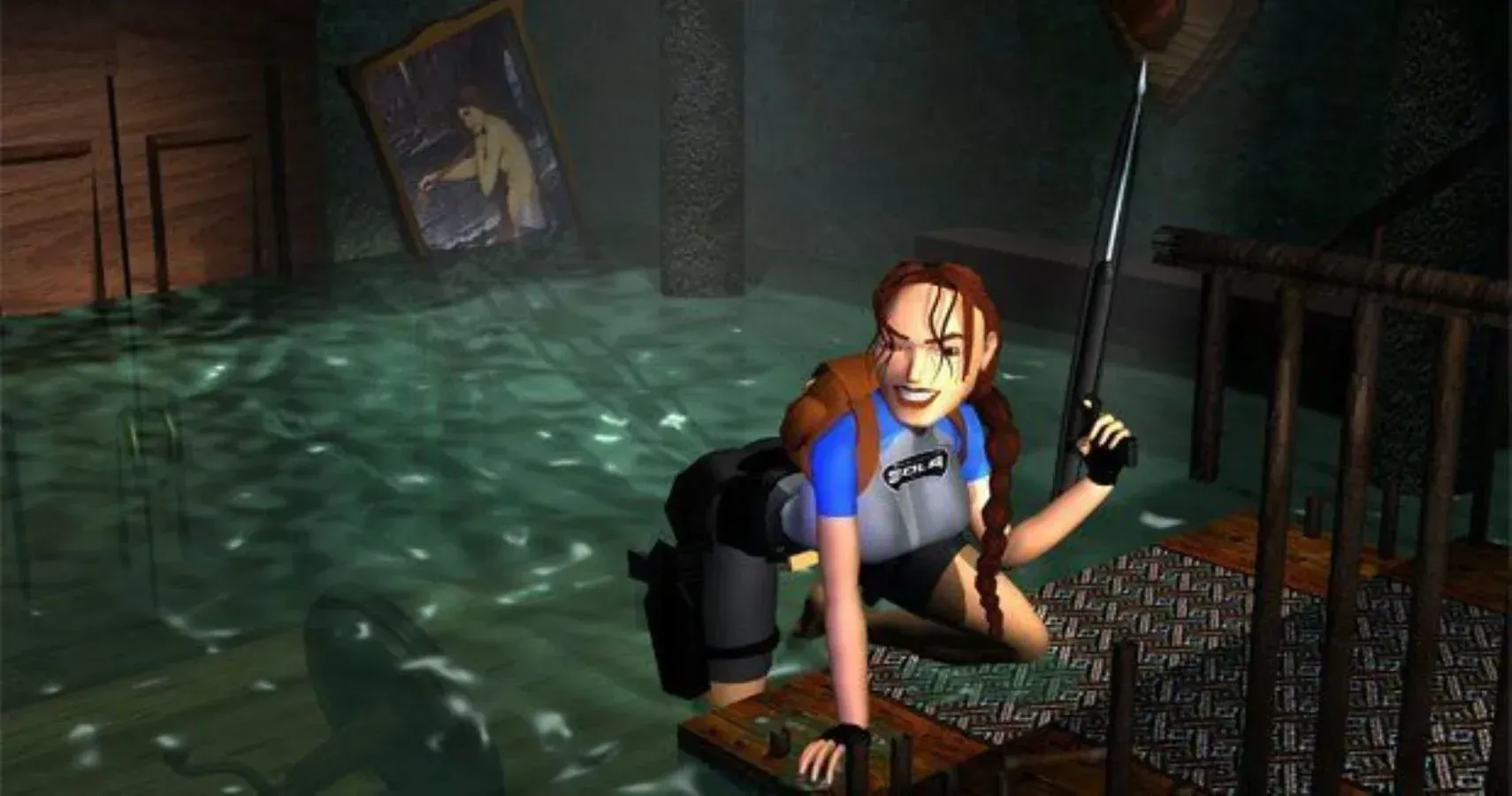Revisiting 1996's Tomb Raider
Celebrating 25 years of the game that launched a phenomenon

Much of the promotional material for the original Tomb Raider smartly centred on its now-iconic hero, Lara Croft. When not exclusively focused on her figure, she was depicted as a confident, acrobatic, gun-toting action star. Her character promised adventures filled with explosive non-stop thrill rides, fraught with perilous encounters against hostile wildlife and trap-laden tombs.
While Lara’s first adventure suffers no shortage of these frantic moments, the bulk of the Tomb Raider experience surprises by being the exact opposite: an eerily quiet exploration of largely empty spaces.

A handful of levels begin with an ambient track of distant rattles and sourceless echoes, effectively conveying the dense emptiness of spaces untouched, or tombs long sealed and forgotten.
However, at least in the PlayStation version, this track only lasts around two minutes. Once it runs its course, the environment falls completely silent. The only sounds are the gentle rhythm of Lara’s footsteps. Grunts as she clambers about. The reluctant grind of worn levers, the scrape of stone as doors sigh open.
In the stillness between these sounds sits an unexpected tension simmering quietly as Lara explores. Threats, whether in the form of devious traps or aggressive wildlife, are surprisingly sparse, and mostly come without warning.
Recent Tomb Raider games intentionally herald some encounters with a cutscene, and others, less intentionally, with environmental cues. Players familiar with modern third-person games will come upon an area peppered with chest-high walls, instinctively know they’re to be used as cover and anticipate a fight long before the first shot is fired.
Not so with the original Tomb Raider, which seems to delight in spacing out encounters just enough that the aforementioned tension slowly yields to cautious confidence. Each corner explored for artifacts, keys and levers further grows that confidence, as familiarity of surroundings sets in and potential hiding spots for hungry wildlife are ruled out.

Then, wolves. Ravenous and agile. Maybe a bear, some bats, or a lion. After long periods of exploring with Lara’s movements providing the only noise, the sudden sound of gnashing teeth often makes their attack more startling than it is dangerous.
Occasionally, the appearance of enemies is accompanied by a short piece of music from Tomb Raider’s excellent soundtrack. In some instances, an especially dramatic piece might strike up before the threat is anywhere in sight, prompting a panicked investigation as to where an attack might spring from.
Composer Nathan McCree’s memorable score remains impressive to this day. Tracks are typically no longer than a minute or two and used sparingly in contrast with the otherwise quiet gameplay to highlight not only the encounters but new areas and notable moments.
McCree wrote the soundtrack in the style of English classical music, which perfectly captures the curiosity and wonder of Lara’s adventure. A sense of history in crumbled ruins. The isolation of being alone in forgotten spaces. The awe of ancient civilizations and their many enticing secrets.

As with most 3D games of its time, Tomb Raider looks a little rough by modern standards. Environmental geometry is particularly blocky, even for a game of 1996, and there are noticeable seams between textures.
Yet there remains a charm and general appeal to the overall aesthetic. Each level feels unique and has a great sense of space, even considering the somewhat limited draw distance. The underground colosseum in Greece feels appropriately massive, as does the giant sphinx in an Egyptian cave, and there’s still something special about how the Lost Valley reveals itself in Peru.
Level layout strikes a pleasing balance between feeling open enough to satisfy the desire for exploration, and still being contained. When figuring out how to progress, the options never overwhelm.
The complete lack of a map or onscreen objective markers creates a gratifying, personal relationship between the player and the space. Being forced to map out environments mentally adds to the sensation of mastering a level, and makes new discoveries feel earned and organic, as though born of choices made rather than directions followed.
Following the release of Tomb Raider, Lara Croft of course went on to become an internationally recognized icon, crossing over to film, comics, commercials, and beyond. The steady stream of games that followed even included a full remake of this first release and the series has now been fully rebooted twice.

Dated though it may be in some areas, the game that started it all feels great to play in 2021. Certain aspects still stack up favorably even against modern entries, particularly those pertaining to level design, the use of sound in building atmosphere, and how spacing out encounters plays with tension.
With the recent trilogy of games coming to a close in 2018’s Shadow of the Tomb Raider, developers at Crystal Dynamics are taking a step back to plan Lara’s next big adventure in gaming. Fans will likely catch her next in either the recently announced Netflix anime series, or the upcoming sequel to the 2018 film reboot, starring Alicia Vikander.
